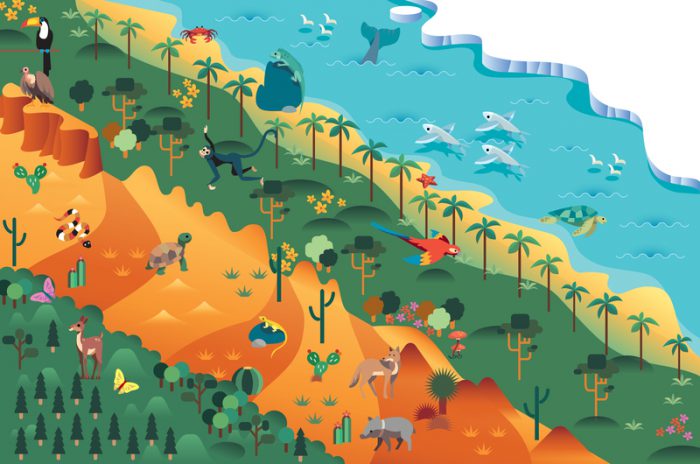Last year, a report was released by the United Nations warning that around one million species on Earth were at risk of extinction. And now we have a plan for how to respond to this danger.
Last week, the UN Convention on Biological Diversity released a new draft plan to protect the species of the world. The plan has 20 global targets, all to be completed by 2030. If met, the scientists believe that a major extinction crisis could be stopped. Or at least lessened.
But the time to act is right now, they warn.
Biodiversity is...
Starlings are one of the millions of animal species on Earth. (Getty Embed)
Biological diversity, or biodiversity, is the number and variety of species living in any given area. An area with high biodiversity — such as a rainforest, wetlands, or coral reef — is full of dozens, hundreds, even thousands of different plants, animals, fungi, and more.
An area with lower biodiversity — such as deserts or tundra — has less of this variety. But whether a place's biodiversity is naturally high or low, all of this diversity is important.
Why does it matter?
Everything in this rainforest — big, small, seen, unseen — benefits from biodiversity. (Getty Embed)
Biodiversity is good for all species. It provides a larger pool of food for the local food web — from plants to grazers to predators, there is lots of nourishment to choose from. The variety also can provide better homes for many animals, from trees to coral to kelp to grasses.
And it helps make an ecosystem more resistant to disease. Even if a few species are harmed by bacteria or viruses, the overall ecosystem stays relatively healthy.
You can also have biodiversity within a single species. For example, the more caribou (and different types of caribou) in an area, the greater chance that caribou group has of surviving disease.
How will this plan help?
By protecting a habitat, at-risk plant and animal species have a better chance of surviving. (Getty Embed)
Right now, climate change and human development is threatening wildlife habitats around the globe. As forests are cut down, or corals die off, or the climate warms, some species go extinct. This lowers the biodiversity, which then makes the surviving species more vulnerable, too. It's a deadly cycle of extinction.
This cycle is what the new draft plan is looking to stop.
It lists key areas of biodiversity — 30% of global habitats — that need to be protected. 10% of those habitats need strict protection (think of a wildlife refuge in a national park). It also has targets for reducing things like carbon emissions, and plastic pollution — two things that greatly threaten wildlife.
Is it already happening?
A coral reef is a prime example of ocean diversity. (Getty Embed)
No. This is just a draft plan — like a blueprint. Now the plan is being read by 200 nations so that it can then be agreed upon in a UN summit in October.
Like the Paris Agreement, this plan will never be law. But it is a list of targets for all of the world's nations to follow. A global guideline for a global problem.
Will it be accepted? And then followed? We look forward to October to find out.
 Biodiversity is a part of all habitats around the globe. (© Jose De Santiago Torices Montero - Dreamstime.com)
Biodiversity is a part of all habitats around the globe. (© Jose De Santiago Torices Montero - Dreamstime.com)









